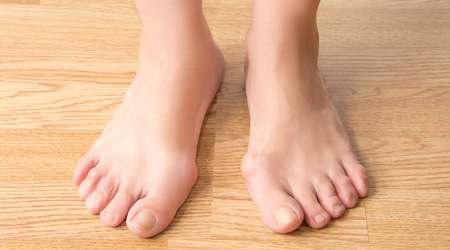Adolescent bunions are far more common in females and are usually hereditary. Most children do not complain about pain related to the bunions but parents are often worried about the deformity progressing. Treatment should initially include wearing more supportive shoes, wider shoes and custom orthotics. Custom orthotics will help decrease stress on the first metatarsophalangeal and first metatarsocuneiform joints, and slow down the progression of the bunion deformity.
If a bunion is painful in a child after conservative care, one should consider surgical repair. Epiphyseal stapling for the correction of hallux abducto valgus in the adolescent population seems to be a successful alternative procedure with low risk. Inhibiting the growth of the lateral physis with a staple across the growth plate, in conjunction with a modified McBride bunionectomy, can reduce a juvenile bunion as it continues to grow medially. Subjective, objective, and radiographic results have proven to be very successful. Bunion surgery reverses the bunion workout fracturing the bone. The growth plate reverses the bunion over time. Best used between the ages if 9 to 11.
Timing is the key with 3 easy steps;
- Find the skeletal age rather than chronological age.
- Asess the amount of correction needed with preoperative template.
- Estimate the growth potential with the aid of a growth chart. Potential overcorrection is always a possibility but with the reversibility of the epiphysiodesis procedure by removal of staple, the chance of overcorrection is significantly decreased.

